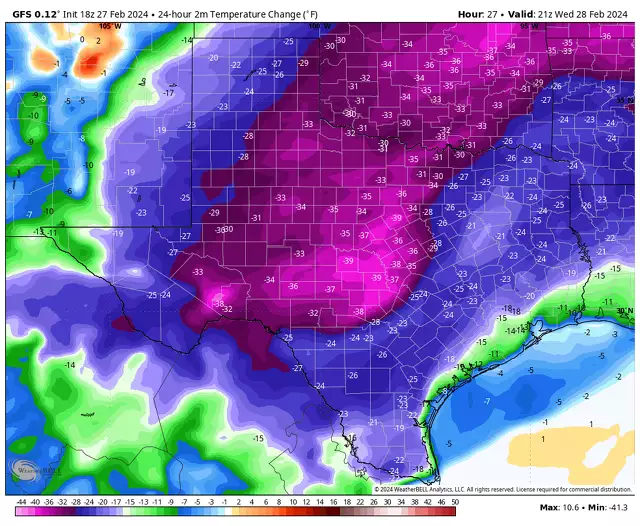Image: 24-hour temperature change from 3 p.m. Tuesday to 3 p.m. Wednesday. Most of Texas saw temperatures drop between 20 and 35 degrees in 24 hours. Graph output from WeatherBELL.
The largest wildfire in Texas history still burns in the panhandle of north Texas, but at its height on Wednesday, February 28 and Thursday February 29, a cold front blew in dropping snow, providing some relief.
Despite the region not being in drought, temperatures were unseasonably high when the fire started. Daily highs were consistently in the 70s at the beginning of the week, and lows in the upper 50s to 60s. Once the fires started, high winds drove it quickly across the typically arid plains covered in dead grass and brush.
On Wednesday, firefighting efforts were helped as a cold front blew in, which, as reported by Storyful on Yahoo News, brought snow up to 2 inches of snow in its wake on Thursday.
“The National Weather Service (NWS) warned Amarillo residents [where temperatures dropped below freezing] to be prepared for reduced visibility and slippery roads as a heavy snow band brought much-needed moisture to the area on Thursday morning, February 29,” repoted Storyful. “Footage taken by Jimmy G shows snow coming down in Amarillo on Thursday morning.
“‘This all happened within the last half-hour. Thank you, God,’ he wrote on X.”
An Associated Press (AP) story carried by NBC News 5 reported that as bad as the fire has been, it would likely have been worse had the weather not changed and brought snow.
“A dusting of snow covered a desolate landscape of scorched prairie, dead cattle and burned-out homes in the Texas Panhandle on Thursday, giving firefighters brief relief in their desperate efforts to corral a blaze that has grown into the largest in state history,” wrote the AP.
Lubbock, Texas Firefighter Lee Jones, who was among the hundreds on the frontline fighting the fire, told the AP, “[t]he snow helps,” a sentiment echoed by Juan Rodriguez, a spokesman for the Texas A&M Forest Service.
“The rain and the snow is beneficial right now, we’re using it to our advantage,” Rodriguez told the AP. “When the fire isn’t blowing up and moving very fast, firefighters are able to actually catch up and get to those parts of the fire.”


